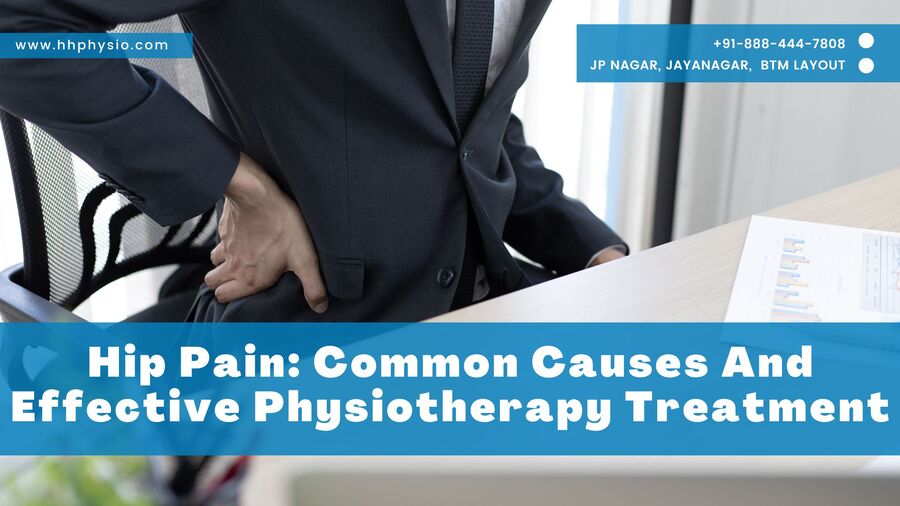Hip Pain: Common Causes And Effective Physiotherapy Treatment
Hip pain can be a frustrating and debilitating condition that can greatly impact one’s daily life. Whether it’s caused by an injury, overuse, or a chronic condition, understanding the underlying causes of hip pain is crucial in order to effectively treat it. In this blog, we’ll discuss some of the most common causes of hip pain and how physiotherapy can help alleviate it.
Common Causes of Hip Pain
Osteoarthritis: Osteoarthritis is a degenerative joint disease that commonly affects the hips, among other joints. It’s caused by the gradual wearing down of cartilage in the hip joint, leading to inflammation, pain, and stiffness. This condition is more common in older adults, but it can affect people of any age. Symptoms of osteoarthritis can include stiffness, pain, swelling, and decreased mobility.
Bursitis: Bursitis is a condition that occurs when the bursae, small fluid-filled sacs that cushion the joints, become inflamed. This can happen in the hip joint due to repetitive motion, injury, or overuse. Symptoms of bursitis can include pain, swelling, and tenderness in the hip area.
Tendinitis: Tendinitis is the inflammation of a tendon, the fibrous tissue that connects muscle to bone. This can occur in the hip joint due to overuse or repetitive motion. Symptoms of tendinitis can include pain, stiffness, and swelling in the hip area.
Hip Fracture: A hip fracture is a break in the hip bone, usually caused by a fall or other trauma. Symptoms of a hip fracture can include severe pain, swelling, and bruising around the hip area, as well as difficulty standing or walking.
Labral Tear: The labrum is a ring of cartilage that surrounds the hip joint, providing stability and cushioning. A labral tear can occur due to injury or overuse, leading to pain, stiffness, and limited mobility in the hip joint.
Muscle strain: Muscular strain can cause imbalance around hip joint and can cause pain around the hips as well. It could be due to prolonged sitting, excessive strain due to sudden movements or lifting heavy.
Physiotherapy Treatment for Hip Pain
Physiotherapy can be an effective treatment option for many types of hip pain. A physiotherapist can work with you to develop a personalized treatment plan that addresses your specific symptoms and needs. Here are some common physiotherapy treatments for hip pain:
Manual Therapy: Manual therapy involves hands-on techniques such as massage, stretching, and joint mobilization to improve mobility and reduce pain in the hip joint.
Exercise Therapy: Exercise therapy can help strengthen the muscles around the hip joint, improve flexibility, and reduce pain. A physiotherapist can design an exercise program that is tailored to your specific needs and goals.
Education and Advice: A physiotherapist can provide education and advice on proper posture, body mechanics, and ergonomics to help prevent future hip pain and injury.
Modalities: Modalities such as heat, ice, ultrasound, and electrical stimulation can be used to reduce pain and inflammation in the hip joint.
Assistive Devices: Assistive devices such as crutches or a cane can be recommended to help reduce weight bearing on the affected hip joint, which can help reduce pain and improve mobility.
Conclusion
Hip pain can be a challenging condition to manage, but with the right treatment, it’s possible to reduce pain, improve mobility, and prevent future injury. Physiotherapy can be an effective treatment option for many types of hip pain, and a physiotherapist can work with you to develop a personalized treatment plan that addresses your specific symptoms and needs. If you’re experiencing hip pain, don’t hesitate to reach out to a physiotherapist for help.
Also Read: Carpal Tunnel Syndrome: Causes, Symptoms, and Treatment Options
Share it with others…

